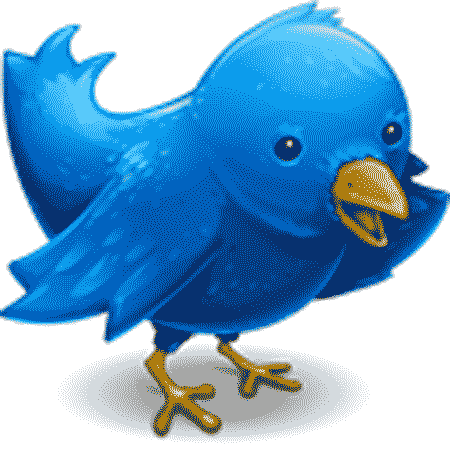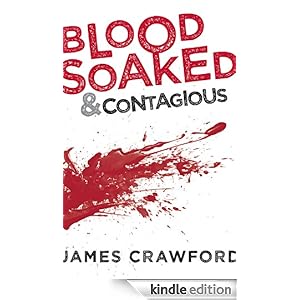Here are some key points of interest from the past month.
Is Twitter good for marketing books?
The Red Pen Of Doom certainly doesn’t think so. The Twitter, it is not for selling books makes a strong case that social networking sites are not the place to sell ebooks. What matters instead is name recognition. And most of that comes from the traditional media.

This seems counterintuitive when so many writers spend so much of their time using Twitter or Facebook to pubicise their work. It also discounts John Locke’s account in ‘How I Sold A Million Ebooks In Five Months’ where twitter was used as a means of building and creating a loyal readership, a targeted audience. But the maths in the RPOD article, are strangely unsettling. Here’s my version of it:
Market surveys suggest that of those that receive a posting, 1% respond and 5% of those buy.
(audience) x (% who pay attention) x (% who buy it) = sales
So for a well connected author with a great, well written book and 50,000 people who see this author’s tweets in a month, what would the outcome be?
(50,000) x (1 % pay attention) x (5 % buy it) = 25 sales/ per month.
So what if this author sends 10 different, well constructed tweets per day and the assumption is made that they all have an equivalent effect (that is the recipients don’t suffer, compassion fatigue), the total is just 250 sales/ month. If, as is likely, compassion fatigue reduces the impact of those tweets by 50%, the outcome is about 125 sales per month. And this will involve the author sending 300 well constructed tweets per month, itself a difficult and time consuming activity.
These numbers will look eerily familiar to a lot of authors who use Twitter.
RPOD contrasts this with a writer of a poor book who has name recognition via the traditional media of TV or magazines or movies. Say that a movie is made of that book and the trailer gets a fair airing. Up to 100,000,000 people could be exposed to this worldwide in a month. Then the maths look different:
(100,000,000) x (1 % pay attention) x (5 % buy it) = 50,000 sales/ per month.
And this is a bestseller.
It’s the sheer weight of numbers in the mass media that does the trick and you’re not going to get anywhere near those numbers in the social media networks. That’s the nub of RPOD’s case.
I think it’s clear that this does not take into account John Locke’s idea of identifying and addressing a target audience. But most writers are not good at doing this anyway.
As one of the respondents to the RPOD article comments, how then do indie writers get acess to the mainstream media? How do they build name recognition? These could be the outstanding questions.
A cautionary tale - author loses over $10,000 in price mix up

Matthew Humphries reports at Geek.com the cautionary experience of James Crawford and his novel 'Blood Soaked and Contagious', priced at $4.99 on amazon. He uploaded three chapters of the book and offered them for free on Nook. Amazon applied its policy of reducing their price to the lowest available elsewhere, assuming (incorrectly) that the Nook version was the full version and began selling the book for free. Before the change could be rectified, 6,111 copies had been downloaded. Amazon has refused to compensate the author who could have been deprived of over $10,000 in royalties (if you assume that he would have sold this number of copies at the proper price).
It seems to this writer that there are some real dangers here. Many authors on amazon also publish with smashwords. Smashwords make their books available to Kobo. Kobo often discounts its books, say reducing 99c to 49c. If amazon price matches, suddenly the book is on amazon at 49c whether the author wants it or not......
Plot Device - This is great!
'The Killing II' and strong language
Danish series 'The Killing' was a critical and commercial success with its long time span, excellent direction and acting and its use of strong language, faithfully translated in the English subtitles. (Not to be confused with the US remake which was nowhere near as good). So fans of Sara Lund, she of the oh so warm hand knitted fairlisle jumper and the all round gritty crime fighter fame, will be disturbed by reports that in the translation from Danish in the subtitles to 'The Killing II' punches have been pulled and euphamisms substituted for the expletives of the original.
The series is currently running on BBC4 and Danish speakers are invited to report on whether there is any truth in these assertions.
Of course, this raises the question for all types of writing - is the use of strong language justified? Lucky then that this very issue has been addressed in some detail in a blog thread 'Strong Language: Does It Have A Place? that I started over at Kindle Users Forum.
Oh, and here's an interview with Sofie Grabol:
And here's a blog-in with Sofie from the Guardian.
Much of the success of 'The Killing' comes from the sharp writing of Søren Sveistrup, also interviewed here.
Are women writers wining the Sci Fi battle of the sexes?
So asked Paul Bignell in a recent article for the Independent, thus giving him an excuse to feature a shot of Jane Fonda from the movie 'Barbarella'.
But he has a serious case to make when he points out that in the genre, far from being the window dressing that they were so often regarded as in the past, women are now calling the shots as authors of fantasy and sci fi:
'Lauren Beukes's new book, The Shining Girls, which features time travel, was secured last month by HarperCollins for a six-figure sum. Similarly, Karen Thompson Walker's The Age of Miracles, about a giant earthquake which knocks the world off its axis, slowing down time, was bought earlier in the year by Simon & Schuster for almost £500,000. And Deborah Harkness's historical fantasy, A Discovery of Witches, has been the toast of recent international book fairs.'
The high advances, he adds, signal a shift in direction by mainstream publishers towards fantasy and sci fi, and in particular towards women authors.
That's all so far, folks! Hope you've found this informative and entertaining.
Your help
If you found this article interesting or entertaining, please consider spreading the word to your friend and followers by using one of the buttons on this page
You might also consider pasting this link into your web page or blog:
RETURN TO: For Readers and Writers
RETURN TO: Main Page
4 comments:
Hey Seb. I've been saying this all along - I think it's extremely hard to find a target audience on Twitter and I feel like I'm preaching to the choir whenever I post there.
Thanks for posting.
For me, twitter has been useful to connect with readers and people with an interest in ancient history--but I get the point being made here. The message goes out to a lot of people. I retweet more than I send out messages about my books.
As far as discounting is concerned: Kobo no longer discounts books that way. Mark Coker at Smashwords resolved that problem about a year ago.
I'd say that there's a large number of people who would take that 25 books a month generated by tweeting and twittering. A fair number wouldn't turn up their noses at ten additional sales a month.It's all part of the process.
As for Mr. Crawford and his involuntary price change. That 6000 probably didn't happen in a day, it likely took several days at a minimum. Amazon did something similar to me, taking the price of my novella down from $.99 to 0.00. However, I was educated in the business, understood the agreement I was making with Amazon, and knew that they had the 'right' to change the price.
I have no doubt he was thrilled to see so many sales but he's either disingenuous or foolish to thing that Amazon owes him anything. Judging by his prior sales - easily checked through NovelRank - it's unlikely he would ever have sold that many unless Amazon or one of the Big Six picked him up. (Which in light of his complaint is much less likely now.) No doubt those 'free' sales probably gave him some much needed publicity and/or bumped him up on the free bestseller lists, getting his name out there in a far more positive way. He's very likely generating a lot of sympathy sales right now, with everyone sharing his tale of woe. How long that will last is anyone's guess.
Hi, Seb. Thanks for the thought provoking article. Re: Twitter for sales. I wrote a blog post on John Locke's spectacular success. It's basically a case study; I used to do this type of think for a living. http://www.yourshelflife.com/?p=997 John did WAY more than chuck out twitters and strike pay dirt. Read the article. I regard his success as attributable to his incredible "people skills" and "joining up" with people on-line. Can others do this? I sure haven't. Re: Traditional media and sales. I know that I can sell whenever I'm face to face with my buyers. Book signings have been successful for me, but are LOTS of work to organize. How does an author published by a small press or self-published get access to the media? (The link to the follow up article above didn't work.) I don't have any budget to put myself on TV. I did receive a lovely offer to be on major national TV. In Florida (I would pay the transportation & lodging costs). For 5 minutes. And I would only cost me $5,900 for the privilege. I turned it down. Another of the scams we authors are subjected to. The larger question remains: EVEN IF WE COULD USE TRADITIONAL MEDIA, WOULD IT WORK? My husband and I once owned a furniture store. (We refer to our period of ownership as the years of living death.) We tried most of the traditional media. Print ads in newspapers and magazines. Radio ads. In addition to all the usual like big sales and specials and banners all over our very high traffic location. All the traditional advertising was a waste of money. So what works?
Post a Comment